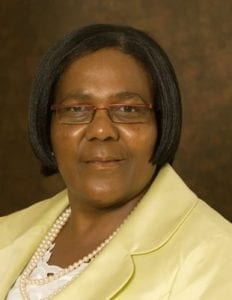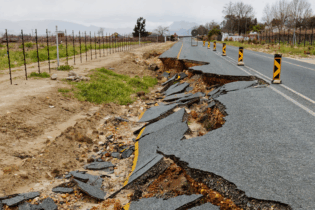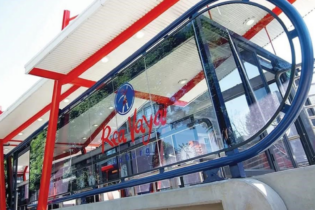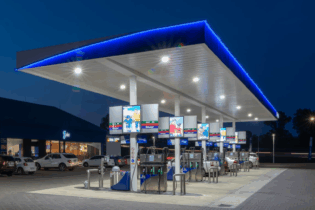The e-tolls in Gauteng have created rather emotional discussions and it is interesting that the ANC in Gauteng established the Advisory Panel on the Socio-economic impact of e-tolls in the province.
Until now representations have been made mostly by those in opposition to the e-tolls. And now the government is stating its case. The Minister of Transport, Dipuo Peters addressed the panel on Wednesday 4 November and below is her unedited speech. This, TWA believes will allow you to form your own opinion regarding the governments’ stance on why they introduced the system. When the Department made the decision to present to you, it was informed by our key motivation to not only put the complete background regarding the Gauteng Freeway Improvement Project into perspective, but to also correct, notwithstanding the judicial pronouncements on the project, the misinformation that continues to be perpetuated about this enormous public infrastructure project. We will show that discussions around the tolling of Gauteng freeways started in 1996 and, importantly, were initiated by the Gauteng Provincial Government. The various reports placed before you bear testimony to the Province’s vision. As far back as October 1997, the Province’s Department of Transport and Public Works published a report titled: “Development of a toll strategy”. For the record, SANRAL had not been established then. SANRAL was only established in April 1998. The recommendations in that report, and I quote: “required that the Province accept the proposed strategy of a toll road network.” It went on to say that the strategy requires that (and again, I quote):*ultimately all existing provincial freeways are toll
*all new freeways [in the province] are tolled;
*a combination of manual and electronic toll collection by means of an automatic vehicle identification, be used to implement tolling in urban areas. That report stated that the Province had investigated types of toll systems and toll collection systems and “it was found that both open and closed systems should be considered. Electronic tolling allows the opportunity to lower toll plaza costs considerably and should therefore be used to the maximum from the outset.
It is considered that virtually all toll collection will ultimately be by electronic means, but initially this will not be so.” From the paragraph I have just quoted, it is worth noting that the open road tolling system and electronic tolling – otherwise known as e-tolling – the Province spoke about in 1997 were later implemented by SANRAL. It is a moot point whether the Province would have implemented open road tolling and electronic tolling in the manner SANRAL did. But what cannot be disputed is that credit for the concepts of open road tolling and electronic tolling must be shared with the Gauteng Province, if the 1996 report is anything to go by. The 1996 provincial report also recommended the promulgation of a Toll Road Act which would, among others, make provision for the establishment of a provincial Toll Road Fund. Subsequent to the 1997 report, the Provincial Department of Transport and Public Works published another report in January 1998 (four months before SANRAL was established), titled: Proposed Gauteng toll strategy. That report stated that its recommendations formed the basis of a memorandum to the Provincial Cabinet which proposed the establishment of a system of toll roads on Provincial freeways. The recommendations, the report states, were already accepted by the Provincial Cabinet in November 1997. I don’t know if the esteemed panel has had sight of these reports but in case it hasn’t, we do have copies available. I deal with this aspect, ladies and gentlemen, to clear the confusion about the genesis of this project. The Gauteng Provincial Government was the first to propose a Gauteng toll road strategy. The Provincial Government had then proposed to establish a Toll Roads Management Section in the Chief Directorate of Strategic Planning of its Department of Transport and Public Works to manage tolling in the province. That is how seriously it took the initiative. Now, how did what was originally a provincial initiative become a national project, with SANRAL assuming responsibility for it. A province, unless it has special legislation that effect, does not have the competence to declare and operate tolls. This can only be done through national government and its agencies. To this end, in 2005 a working group chaired by the Department of Transport and consisting of SANRAL, Gauteng Province and the City of Johannesburg was formed and produced a report in 2006 after looking at the necessity and feasibility of the project and investigating a wide range of financing options available to government. Indeed, this was followed by a process of further collaboration with provincial and local government, consultation with civil society and members of our communities. At its core, the Gauteng Freeway Improvement Project was approved by Cabinet in 2007 to rehabilitate and improve road infrastructure in Gauteng. The Albertina Sisulu highway, previously known as R21, was handed over to national government by the provincial government of Gauteng in April 2008. South Africa is estimated to have about 10 million vehicles; about 2, 5 million of these are estimated to be in Gauteng. Of these 2,5 million, an estimated 1 million users per day travel on the tolled roads that account for only 201km kilometre of South Africa’s overall 750 000 kilometre road network. Members may be interested to know that traffic volumes on Gauteng freeways increased from 27% to 42% since 2006. On the N1 between the Allandale and Buccleauch Interchanges, for example, morning peak hour traffic increased from 9 000 vehicles in 2008 to 13 000 vehicles in 2013. An independent survey done by a company providing navigation services showed that since the implementation of the Gauteng Freeway Improvement Project, this has led to a 50% reduction of travel times on the N1 between Johannesburg and Tshwane during peak hours. It is also important to remember that toll collection was postponed on two occasions. The first postponement was in March 2011 after various stakeholders raised concerns. The postponement allowed further consultations to take place. A Steering Committee, co-chaired by the Department of Transport and the Gauteng Province, was then established which recommended to Cabinet a comprehensive discount approach to be taken which included zero-rating of public transport. Government decided to suspend the tariffs and consequently appointed a task team to review the fee structure. The task team held public hearing where interested parties, including business and organised labour, made representations.
In August 2011, Cabinet announced reduced tariffs and exemption for public transport vehicles like taxis and buses. Allow me to again reiterate that no registered public transport vehicle is expected to pay for the e-tolling tariffs. They are exempted because government believes users of public transport are, in the main, people in the low income bracket. Therefore, government wishes to allay fears that the e-toll system will affect or has affected the poor. The concessions Government has made to reduce the cost of transport of the users of the Gauteng e-tolled road network are a clear indication that this government cares for its people and has listened to concerns raised by them. In February 2012, having considered further representations from interested parties and the public, government decided to make an extra-ordinary allocation to SANRAL of R5, 75 billion from the national budget to reduce the cost of transport to the consumer. This led to a further reduction of tariffs to 30 cents per kilometre for light motor vehicles, including the monthly caps for all classes of vehicles. The implementation date was consequently set for 30 April 2012. It is common knowledge that the then anticipated implementation date did not materialize due to an urgent interdict brought against SANRAL. Cabinet at its meeting of 3 May 2012 reaffirmed its decision to fund the Gauteng Freeway Improvement Project through the user pay system. Cabinet further committed to ensure the viability and credibility of SANRAL and its financial sustainability. At the same sitting, Cabinet appointed an Inter-Ministerial Committee chaired by former Deputy President Kgalema Motlanthe to coordinate all work on the implementation of the project, respond to any pending legal disputes, consult relevant stakeholders and propose short term funding solutions for SANRAL. This is how seriously Cabinet took this matter.
The decision to implement the Gauteng Freeway Improvement Project with its chosen funding mechanism was taken after a thorough consultative process and its implementation was in compliance with appropriate legislation.
This has since been confirmed by six courts of law and 17 judges. And here I must pause, chairperson, and express our disappointment with what we see as a creeping tendency to disregard court judgments. It cannot be, that in a constitutional democracy such as ours, people can choose which court judgment they will abide by and which one they will not.Ladies and gentlemen, Gauteng is the economic hub of our country and occupies a prominent place on our continent. It offers a lot of potential for economic growth. Its full potential can only be realised if we ensure that the province has the necessary infrastructure required to exploit its full potential.
One can easily see the economic and developmental impact as a result of the improved infrastructure when driving between Johannesburg and Pretoria – where there was open land, it is built-up and a hive of construction activity. The positive spin-offs of the upgrades that were done on the e-roads are there for all to see. We therefore concur with the views expressed by former Gauteng Transport MEC Ignatius Jacobs when he said in 2004 that: “our goal in the next five years is to ensure increased mobility and accessibility of Gauteng citizens, particularly the poor, to transport and socio-economic infrastructure that facilitates their meaningful participation in economic and social activities.” Launching Transport Month in October 2006, Comrade Jacobs affirmed: “Together with the South African National Roads Agency Limited, we are currently piloting an Intelligent Transport System on the N1 between the City of Johannesburg and the City of Tshwane. This is meant to ease the pressure exerted on that important corridor for the benefit of the economy of our province and our country.” But such developments as the GFIP come at cost. And we all know that often what is required may not be afforded due to a range of demands, especially our social wage bill, on the fiscus. At various times, government is forced to explore other revenue streams in order to fund development, especially its capital expenditure programme. This is a point that was well captured in 2006 by current ANC Gauteng Chairperson Comrade Paul Mashatile when, delivering the Gauteng Medium Term Budget Policy Statement in his then capacity as the Gauteng Finance and Economic Affairs MEC, said:
“To address existing pressures on the fiscus, there is a need to constantly look at ways of optimising provincial revenue and easing the burden on the fiscus. … Other mechanisms of optimising provincial revenue which are currently being explored include the tolling of existing and future freeways. This will allow us to raise private sector funding for the maintenance and construction of high order roads. Funds from the fiscus will then be chanelled towards secondary and primary roads, particularly in our townships.” At its core, the debate about this project has to do with funding. Ladies and gentlemen, funding and maintenance of especially economic infrastructure requires financing; financing requires a revenue stream. The work done on the highways in Gauteng cannot be done gratis. There are many alternative options to the user-pay principle punted, with ring-fencing the fuel levy the most vaunted. But our officials from Treasury are here and will outline why the direct user-pay was the preferred method of funding the Gauteng Freeway Improvement Project. The Medium Term Budget Policy Statement delivered by Minister Nene on 22 October made the constraints on the fiscus clear when he stated: “As a result of slow growth, tax revenue is below our budget projection. Government’s debt continues to rise as a percentage of GDP.” So, as things stand now, the fiscus cannot carry this project without an additional source or revenue stream. But we also need to remember that it is not only about the economy. It is about our people. Undoubtedly, without a national road infrastructure there can be no trade and there will be little economic development and marginal improvement in the quality of our citizens. The strategy of employing private sector funds and selectively applying the user pay principle was implemented on some of our roads to alleviate the shortage of state funds for road construction. This gave rise to toll roads. But I must emphasize that we are carefully selective in our use of the user-pay principle. As a result, the ratio between toll and non-toll roads will ALWAYS be in favour of non-toll roads. Currently, our national road network constitutes of 85 percent non-toll roads and 15 percent toll roads (with the Gauteng Freeway Improvement Project constituting only 1 percent of the entire network that SANRAL looks after). According to the National Development Plan, by 2030 investments in the transport sector will ensure that it serves as a key driver in empowering South Africa and its people, enabling improved access to economic opportunities, social spaces and services by bridging geographic distances affordably, reliably and safely. The NDP further states that moving towards 2030, South Africa’s transport system will support economic development, job creation and growth, providing equitable access to opportunities and services for all and reducing poverty. In spite of what may appear as differences between ourselves and the Gauteng Province, I am encouraged by the Gauteng Integrated Transport Master Plan published in 2013 which indicates support for the Gauteng Freeway Improvement Project. In that Plan, it describes the project as “vital for the further development of the province.” The document, which serves as a 25-year planning document for the province rejects the fuel levy for the funding because it is “not considered as an equitable solution as all South African citizens will have to pay for infrastructure in Gauteng and fuel consumption does not represent the full structural, congestion and environmental impact of the cost responsibility of especially heavy vehicles.” This plan, which I assume the panel does have at its disposal, states that the users of transportation infrastructure “are willing to pay as long as they receive a high quality service in return.” It recommends that alternative funding models should be investigated and that the “levying of tolls should be part of a holistic approach to road financing and has a role to play in a province such as Gauteng.” In this regard, I see a connection between the province’s Transport Master Plan and the 1997 and 1998 provincial reports on tolling that I earlier alluded to. In our deliberations over the next three days, we need to ask ourselves pertinent questions such as: How do we mobilise funds to ensure that South Africa’s national road network receives regular maintenance beyond construction and ensure longevity? Bearing in mind that two thirds of the people of Gauteng do not own a car, how do we ensure the availability of a safe, efficient and reliable public transport system? It needs to be highlighted that SANRAL does not make policy and does not decide on financing. It is a policy implementing agency of government and is categorised as a Schedule 3A national public entity – meaning it is not allowed to operate on a profit basis. Thus, the spurious allegations about SANRAL “milking it” or “profiting at the expense of the public” must be stopped. I repeat: SANRAL does not make policy, it implements Government policy. This is important to clarify because of persistent and unfortunate attempts to isolate the agency from government. The ANC government has, through this agency, delivered a solid and quality national road network that we all should be proud of. In South Africa we do not have national roads that are riddled with potholes. In the past 16 years of its existence in the 20 years of our democracy, the agency has grown its network from 7 000 km to just over 21 000 km and is set to increase its road network to 35 000 km. Attempts to project the agency as profit-driven are unfortunate. SANRAL’s sole shareholder is the Minister of Transport, representing government, and the entity has no mandate to make, declare and retain any profit. Its mandate, on the tolling side, is to operate on a cost-recovery basis. We live in a constitutional democracy and while debate is encouraged, lawlessness can never be. The Gauteng e-toll project is lawful – organised labour, political parties, interest groups and the public must understand that.
This project was not undertaken without thought or consultation – it is not the perfect solution, but doing nothing was not an option.
So much has been said about this project and in the narrative there have been truths, half truths and plain lies. We are hoping that our engagement with the panel over the next three days will affirm the truths, complete the half-truths and jettison the lies. I have with me here a team from the Department of Transport, Treasury and SANRAL and I have directed that their presentations should, in the spirit of openness, be made available to the public through various forms of media so that South Africans can hear directly from us and appreciate the complexity of the issues we are dealing with and why we make the decisions and policy choices that we do.








